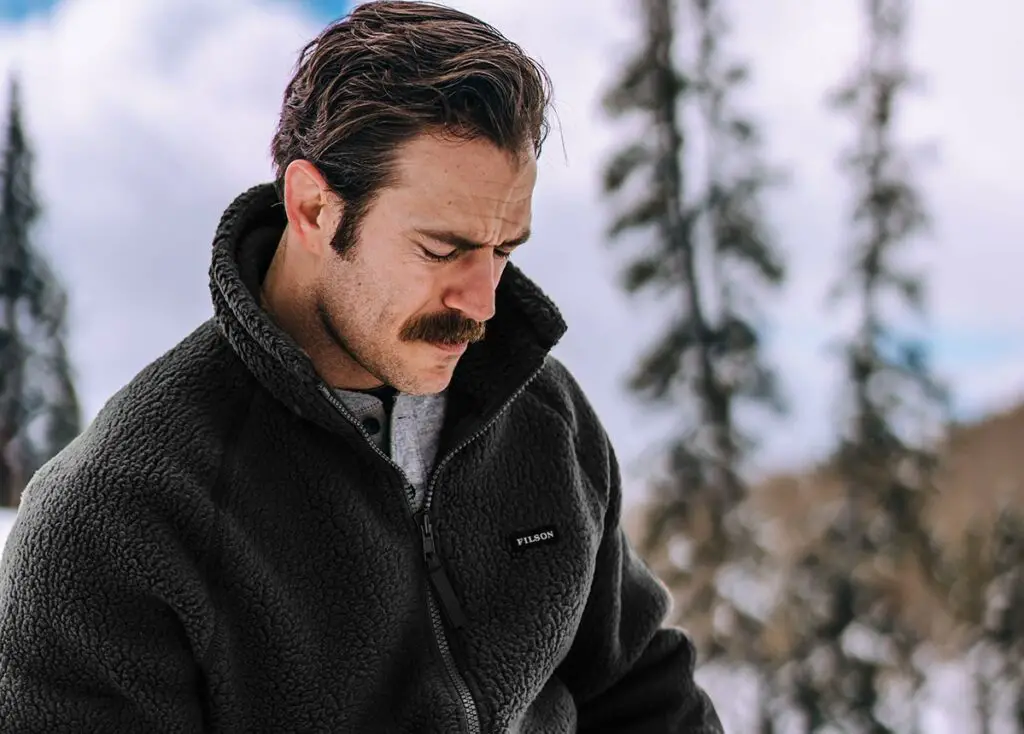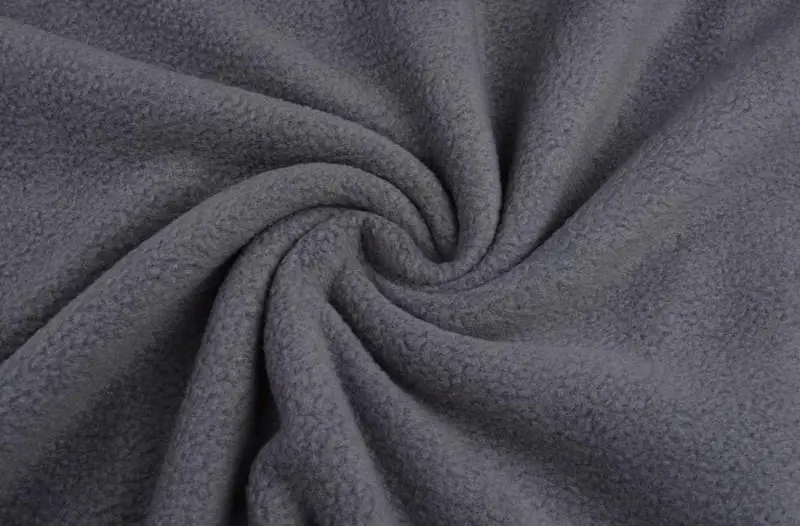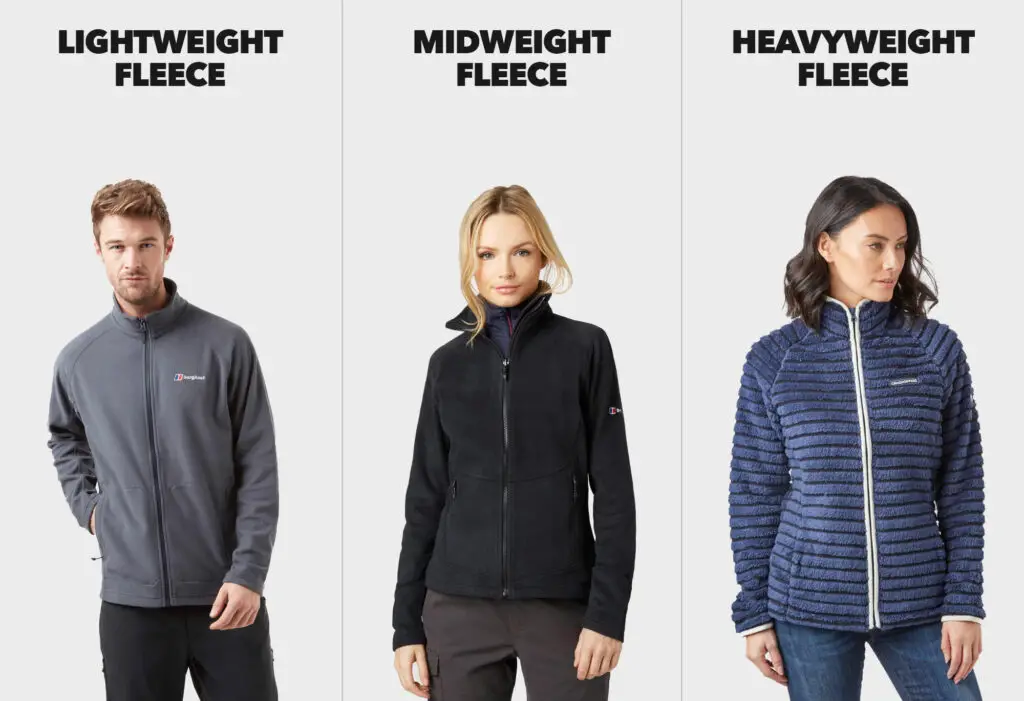As soon as we hear of winter, the first thing on our mind is that we need to keep ourselves warm at any cost. We think of our warmest sweaters and coats, boots that will keep our feet cozy, fuzzy hats and thick woolen gloves. Winters are lovely, think about the snow and the fun you’re gonna have on it.
But, it is also harsh for some people who stay in the coldest temperatures like Alaska. They quite need the protection from freezing cold temperatures. And what better to protect yourself from cold than fleece.
Although regular fleece made of polyester keeps you warm, polar fleece or sherpa fleece are the warmest fleece fabrics that are designed to protect you during severe freezing temperatures.

So what is a fleece?
While it looks purely natural, a fleece is a synthetic fabric often made of polyester, which comes from plastic. Polyester fibres are woven into a light cloth that is brushed to assist the fibres expand in volume.
Therefore, fleece is a material that is entirely synthetic and created from plastic components, as opposed to a warm and fluffy sheep’s coat.
This material’s key characteristic is that it is exceedingly fuzzy to the touch. This ultra-soft, warm, and breathable material is ideal for winter clothing and aids in keeping everything cozy and comfy.
And how many different types of fleece fabrics are there?
Nothing beats a comfortable fleece jacket, sweater, or blanket in the winters to keep you warm. This soft, airy fabric is simple to care for and feels so smooth and soft against the skin, making it a popular choice for winter apparels.
However, fleece comes in a variety of styles, and some are warmer than others. Let us find out:
1.) Polyester fleece
Polyester is the original fleece fabric, used to manufacture a variety of clothing, including your favourite fleece sweater and jacket. It has a soft, smooth side with a glossy appearance.

Although it repels moisture better than cotton fleece, one drawback of polyester fleece is that it can be damaged by heat.
2.) Cotton/ cotton-blended fleece
This type of fleece, made from cotton or a combination of cotton and other fibres, is often used to manufacture comfortable fleece apparels like robes, hoodies, and sweatpants due to its smooth outside and fluffy interior.
This material is also used in certain reusable diapers since it is soothing on a baby’s skin. It may, however, not be as warm as other types of fleece.
3.) Sherpa fleece
If you’re someone who enjoys the fluffy feel of wool, then this sherpa fleece is for you. It has a soft feel and is typically used for lining clothes to make them warmer.
If you’ve noticed, you’ll see that sherpa fleece exactly replaces faux fur, but it is entirely composed of synthetic fibres and that is why it dries faster than wool.
Sherpa is also known as high pile fleece because of its soft texture, similar to that of a sheep’s coat.
4.) Polar fleece
Polar fleece is your best friend in freezing cold temperatures. It comes in a variety of thicknesses, depending on the level of warmth you require.

But more thickness means less flexibility, but this fabric also repels water, dries rapidly, and keeps you warm even when wet. You can say that it is the warmest of fleece.
5.) Lycra/ spandex fleece
As we have discussed above, the more thick your fleece fabric is, the less mobility it allows. But thanks to lycra/ spandex fleece as it gives equal mobility and elasticity to your fabric along with good insulation.
Because it hugs the body, Lycra spandex fleece is frequently used to make fitted apparel for females. It’s also mostly used in sports clothing since it’s warm and moves with the wearer, making it ideal for sports and other activities.
Let’s look at some advantages and disadvantages of wearing fleece in the chart below:
| Advantages | Disadvantages |
| Soft and smooth texture
Breathable Durable Lightweight and comfortable Flexible Moisture wicking |
Prone to pilling
Generates static energy Flammable Cannot tolerate high temperatures like ironing or tumble drying Not windproof |
To keep yourself absolutely warm during those cold winter days, you should prefer fleece. But you need to be aware of the different weight of fleece fabric.
| Weight | Type | Use |
| Less than 100 gram per sq/m | Ultra lightweight | Ideal for summers |
| Between 100-200 gram per sq/m | Lightweight | Regular wear, ideal for summer or warm rainy days |
| Between 200-300 gram per sq/m | Mid weight | External layer with regular clothes during chilly days |
| More than 300 gram per sq/m | Heavy weight | Ideal for extreme cold temperatures, works as a thermal insulator |
Let’s look at this category in details:
1.) Microfleece– Microfleece is generally defined as any fleece with a weight of less than 200 gram per sq/m. If you plan to undertake any physical activity while wearing this fabric, it wicks sweat away from your skin, keeping you dry.
It is commonly used in sports apparel due to its lightweight and thin nature. They have the least amount of insulation yet the best breathability.

2.) Mid-weight fleece- A mid-weight fleece is defined as any fleece weighing between 200-300 gram per sq/m. When the weather is cool, this fleece may be used as an outer layer for walks and hikes.
Mid-weight fleece is warmer and more insulating than lightweight fleece, as well as more comfortable and breathable.
3.) Heavyweight fleece- Heavyweight fleece ranks highest in the fleece weight scale, weighing 300 gram per sq/m or more. As a thermal fleece, this fleece is best suited for extremely cold weather with restricted physical activity.
Heavyweight fleece is the least flexible, yet it is also the warmest and most insulating among all the fleeces. Polar fleece is considered a heavyweight fleece which is the warmest of all fleece.
Features of heavyweight (polar fleece) which makes it ideal for cold temperatures:
1.) Lightweight- Even though polar fleece are the heaviest among all the fleeces, they are comparatively lightweight as compared to other winter fabrics.
Their lightweight feature is ideal because it makes layering easier so that you don’t feel uncomfortable carrying all that weight around.
2.) Moisture resistant- This material is ideal for extremely cold temperatures since it is produced from the finest polyester fibres. Fleece jackets are also very water-resistant due to their material.
Not that you’d want to wear your cosy fleece jacket in the rain, but it’s highly effective at sliding off moisture created by freezing temperatures, keeping the cold at bay.
This function is critical if you enjoy the outdoors and intend to spend some time in the snow.
3.) Dries easily- Fleece tends to lose moisture quickly due to the way it’s manufactured. While fabrics such as wool and cotton take a long time to dry, fleece doesn’t. Its polyester microfibers shed water swiftly and effortlessly, and you can actually wear them everyday.
4.) Won’t let sweat accumulate on your body- Fleece is a moisture wicking fabric that will drain moisture away from the body in addition to trapping in heat and regulating body temperature. This will keep sweat from clinging to your skin and dampening it.
To conclude, fleece is a wonderful fabric that is ideal for winter, especially polar fleece that is the warmest fabric that you’ll ever come across. It comes in various types and with some amazing properties.
All you need to know is when and where you will be wearing your fleece apparel and according to that, you may choose your fleece type.







